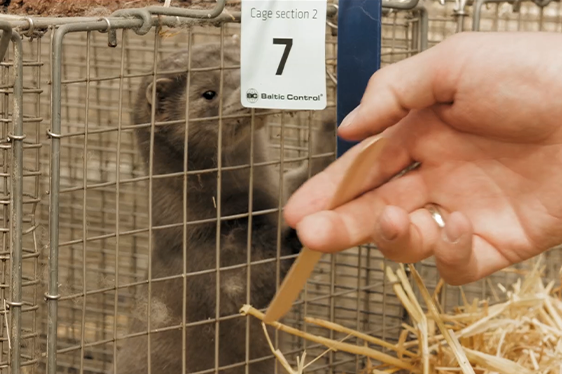Animal Welfare

May 15 2020 - Resource and management indicators could be used to identify risk factors, but welfare cannot be assessed through checking walls or floors, says Antoni Dalmau, an animal welfare researcher from Institute of Agrifood Research and Technology (IRTA) in Spain.
He spent the last 15 years studying the complexity of one of the long-standing issues in farming – how to ensure a quality life for farmed animals.
“Animal welfare is a condition of the individual animal, and animal welfare science is more and more about the assessment of the animal’s own experience. Only animal-based indicators can give you an idea about that.’’
The physical and emotional health of an animal as well as its behaviour, known as animal welfare, is at the centre of a long-lasting discussion between policymakers, scientists, and farmers. In recent years, it has also become part of the broader debate about sustainability practices in farming.
But before anything else, animal welfare is a question of science.
In order to evaluate the wellbeing of farmed animal species, scientists rely on animal-based indicators. They examine the physical and emotional state, the behaviour and even the appearance of an animal to determine the quality of life on the farm.
But the process is not straightforward. To get a detailed picture, researchers take into account the so-called resource-based and management-based indicators which measure the environment where animals are bred.
According to Mr Dalmau, although they provide important additional information, they cannot be given the same weight the measures which look directly into the animal.
“You cannot assess what you are not observing. You are not assessing welfare if you are not using animal-based measures. If you are observing walls, you are assessing walls.”
Creating an assessment based on the housing systems, for example, could give simplified and even misleading results, which do to reflect truly animal’s state of wellbeing. According to him, many people prefer these indicators because they are easier to communicate and understand.
“NGOs are used to work with resource and management-based parameters because they are easy to apply and to communicate to their funding bodies and society - I don’t allow cages; I don’t allow tail docking; I don’t allow castration; I ask for free-range. This is easy to assess and to communicate.’
Narrowing it down the assessment method jeopardises the scientific objectivity, adds Mr Dalmau.
“For most of the people, this means, better. But not for the animals. For them, easier, faster and cheaper is not better. For them, what is better is that their interests and states are taken into account.”
According to him, this is also the reason why it is difficult to create one single animal welfare law across Europe.
EU policymakers spent the last decade looking into ways to how to create a common framework for animal welfare legislation. Currently, there are not harmonised rules across the continent, and animal welfare is regulated by EU directives while rules in member states vary.
More than a decade ago, the European Commission launched the Welfare Quality project in an effort to understand how animal welfare could be quantified. The research project endorsed the animal-based indicators and prompted the creation of protocols for cattle, pigs and poultry.
Later, it also laid the groundwork for industry-led, voluntary certification programmes such as WelFur and WELFAIR™ - a livestock farms and slaughterhouses certification programme in Spain covering different animals.
The European Union Reference Center for the Welfare for poultry and other small farmed animals is the latest initiative to collect and compare animal welfare data, and possibly help policymakers to create common legislation.
According to Mr Dalmau, many expect science to provide a clear and simple, black or white answer about animal welfare, whereas the issue is much more complicated.
‘’Welfare is not present or absent, black or white; it is continuous improvement, and for this reason a good scientific validating and a realistic plan are important.’’
Current animal welfare programmes have been time-consuming and expensive to create. They required scientific knowledge, validating the science, training assessors and carrying out the large-scale inspections.
But they also proved it is possible to evaluate and quantify animal welfare through science – knowledge which one day could be useful when the time for common animal welfare law comes.